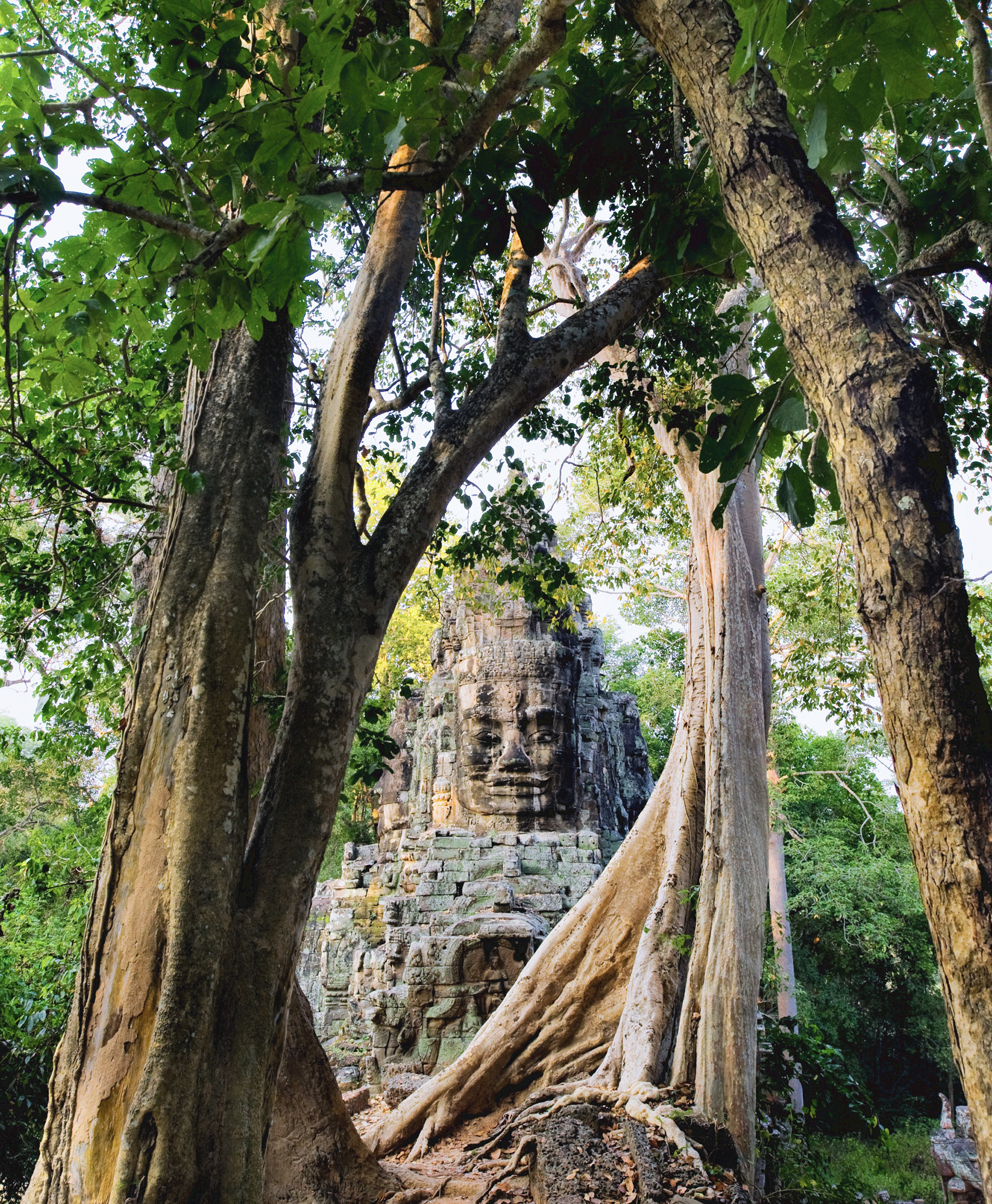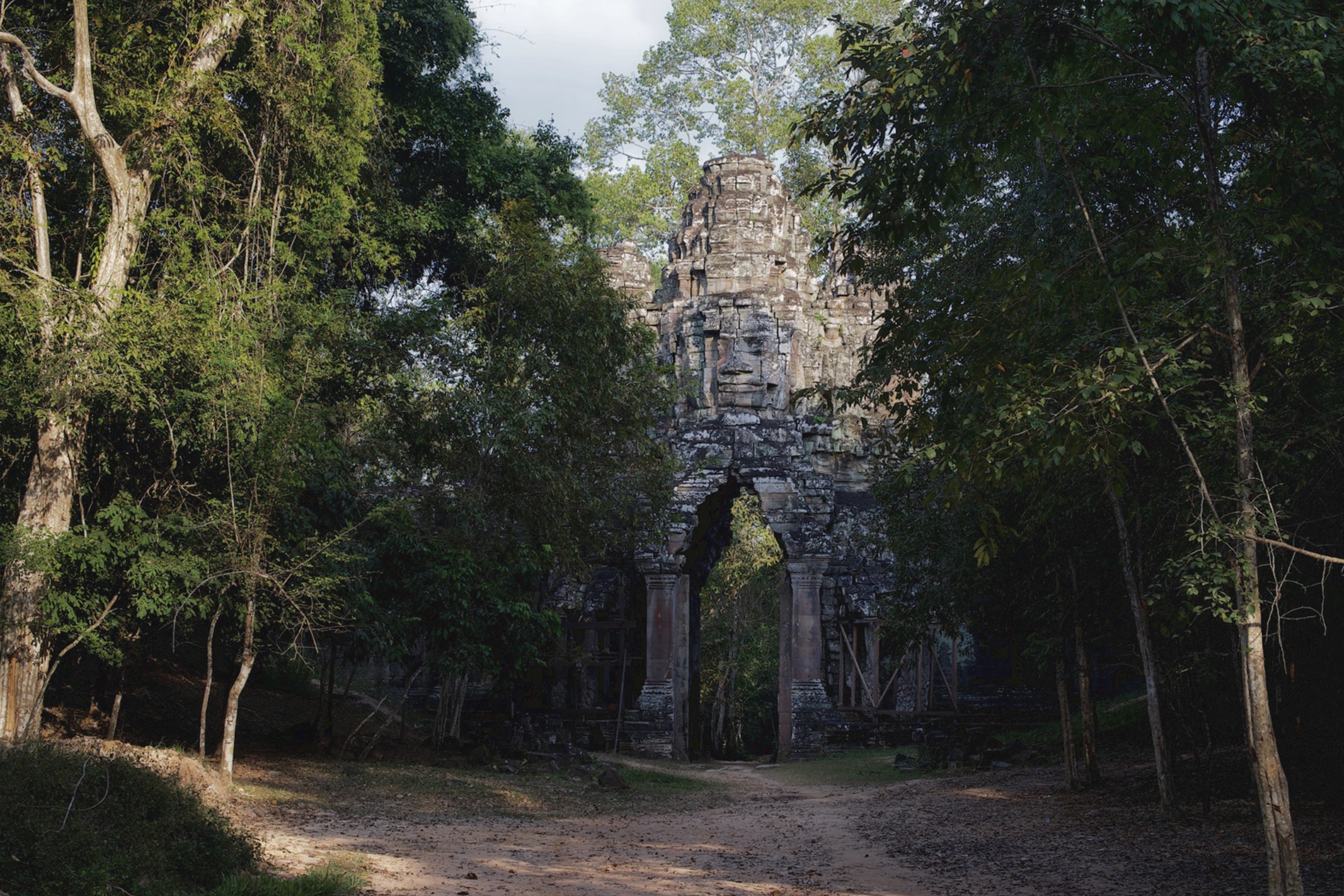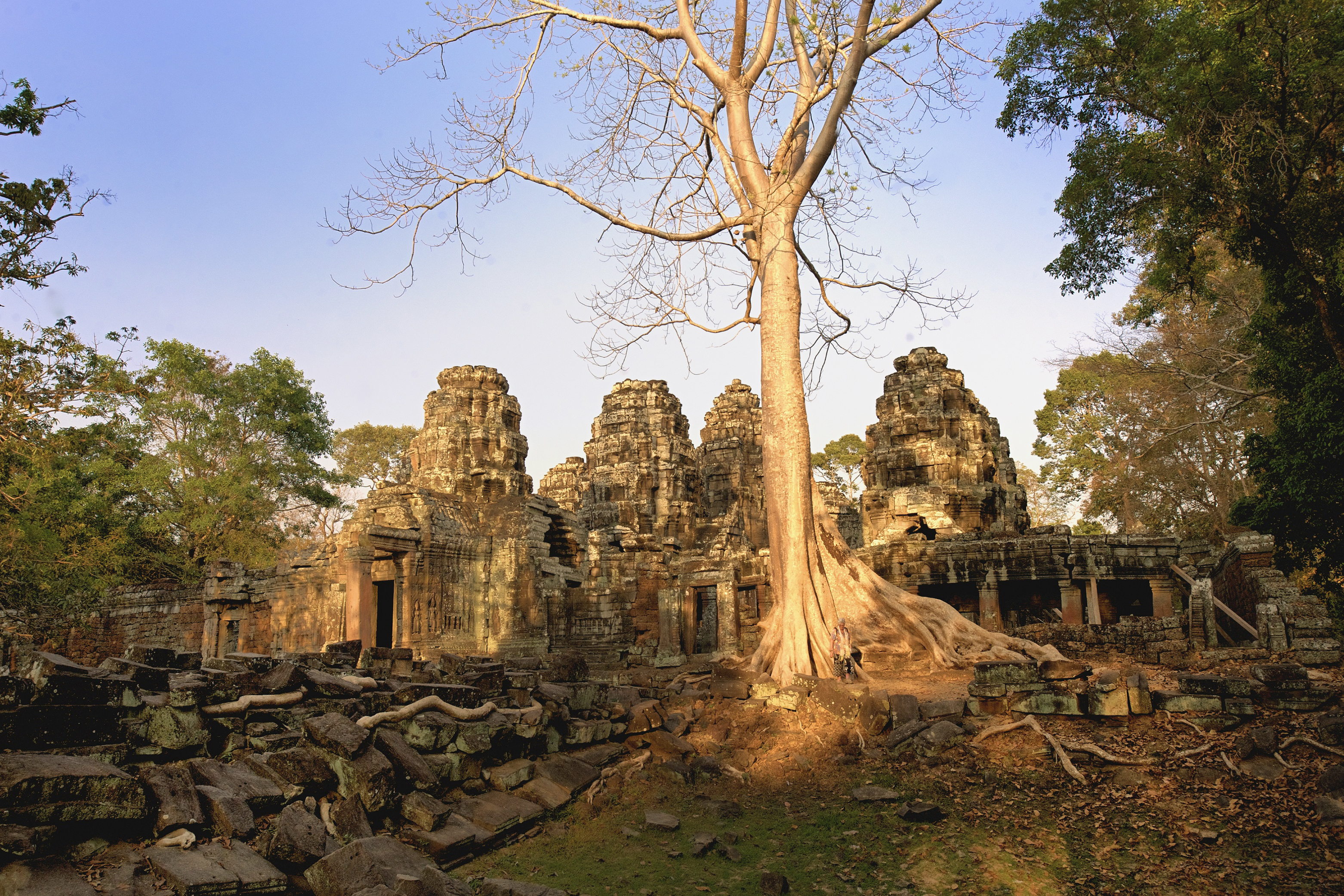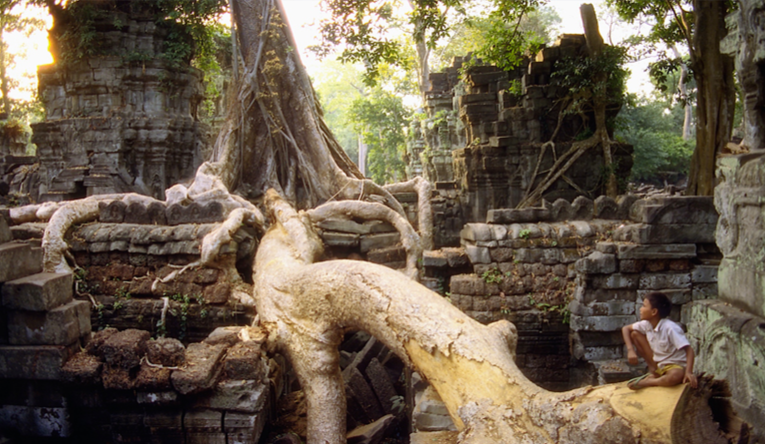The earlier to rise the better experience for our specialised program into the ‘backcountry’ of Angkor.
A short road journey out of Siem Reap takes us towards the Western Baray and into the communes of Koh Chak and Kok Chan. We disembark our vehicle to collect our bicycles and commence our short cycle ride through the community and across to the Western Gate of Angkor Thom.
King Jayavarman VII ordered the capital city to have walls built around the area at 8m high , 3km at each side and moats that are 100m wide. The walls are of laterite buttressed by earth, with a parapet on the top. There are gates at each of the cardinal points, from which roads lead to the Bayon at the centre of the city.
These more remote entrances to the temples are primarily for locals to access and criss-cross the complex, but the peaceful natural environment and distinct lack of tourists makes for an atmospheric entry point. A short 500 metre ride takes to a forested pagoda, opposite the mighty Bayon. If we time our visit right we may be able to see and hear the local monks at prayer before conducting their morning chores.
We continue to cycle past the Bayon temple (we leave our visit there for another time) and follow an abandoned road through the forest for 1.5kms to the Eastern Gate, known ominously as the Gate of Death. Legend has it that it was through East Gate that convicts were sent to be executed.
The gate’s highlights include statues of gods and nagas on the approach to the gate, and carved faces on top of the gate, reminiscent of those at Bayon. Restored with care, it is the only gate of Angkor Thom to be untouched from eight hundred years ago.
We leave our bicycles aside here and commence our climb up the walls of Angkor Thom’s giant moat. 12kms in length, the wall is an attraction on its own. In 1177 the invading Chams from the Kingdom of Champa were only challenged by a wooden wall so Jayavarman VII constructed the stone wall which now remains. It consists of 1 metre square blocks of laterite, stacked 8 metres high on the external and inner walls, and reinforced with earth inside.
We walk along a short 500m stretch of the rampart to arguably the finest and best preserved gate of Angkor Thom – the Victory Gate. The gate is called "Victory Gate”, according to the assumption that it was this gate through which King Jayavarman VII sent his army into battle against Champa, the Khmer empire's mighty enemy to the east.
Witnessing the gate’s monumental Buddhist face come into view from the forest cover is one of the joy’s of exploration and, if timed right, will be ours to view alone in solitude.










